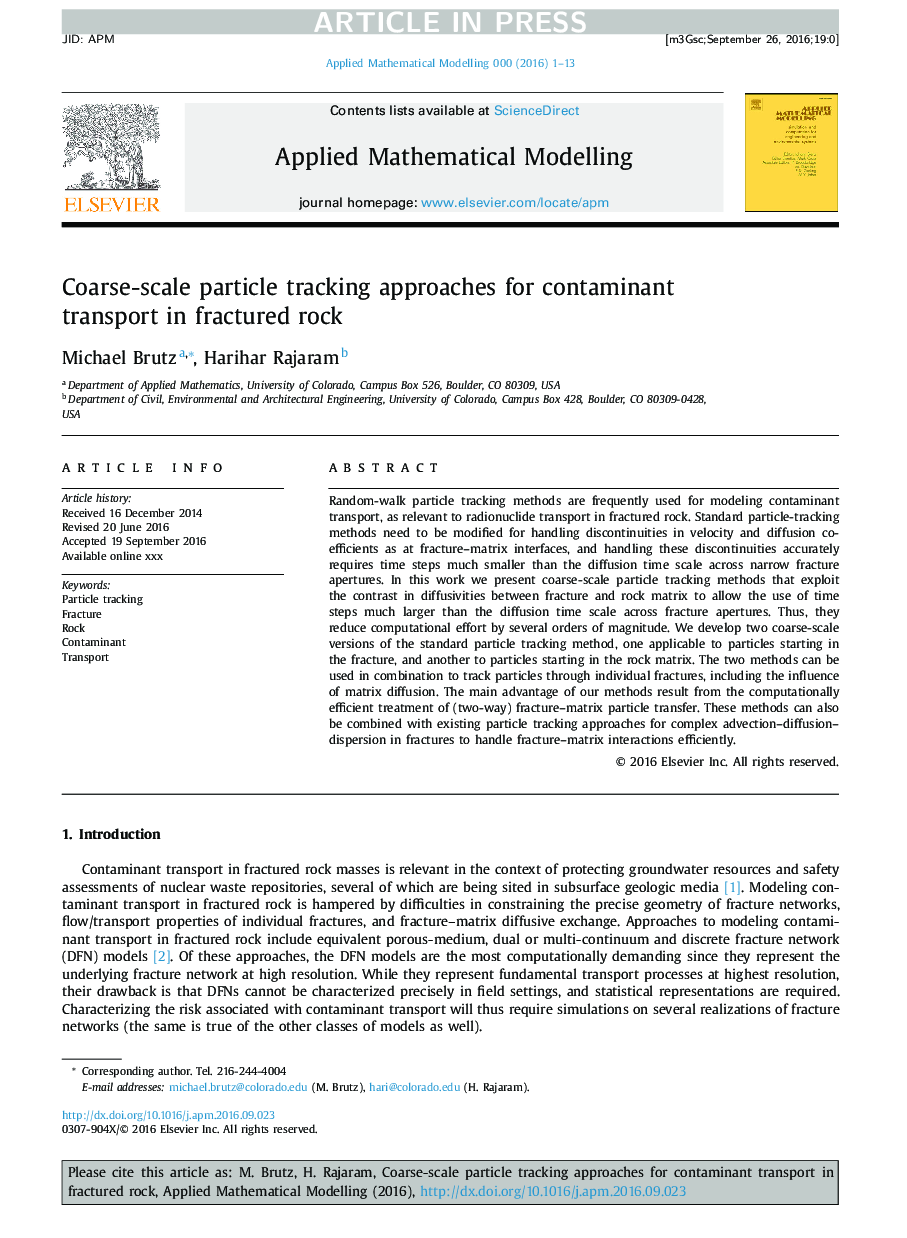| Article ID | Journal | Published Year | Pages | File Type |
|---|---|---|---|---|
| 5471379 | Applied Mathematical Modelling | 2017 | 13 Pages |
Abstract
Random-walk particle tracking methods are frequently used for modeling contaminant transport, as relevant to radionuclide transport in fractured rock. Standard particle-tracking methods need to be modified for handling discontinuities in velocity and diffusion coefficients as at fracture-matrix interfaces, and handling these discontinuities accurately requires time steps much smaller than the diffusion time scale across narrow fracture apertures. In this work we present coarse-scale particle tracking methods that exploit the contrast in diffusivities between fracture and rock matrix to allow the use of time steps much larger than the diffusion time scale across fracture apertures. Thus, they reduce computational effort by several orders of magnitude. We develop two coarse-scale versions of the standard particle tracking method, one applicable to particles starting in the fracture, and another to particles starting in the rock matrix. The two methods can be used in combination to track particles through individual fractures, including the influence of matrix diffusion. The main advantage of our methods result from the computationally efficient treatment of (two-way) fracture-matrix particle transfer. These methods can also be combined with existing particle tracking approaches for complex advection-diffusion-dispersion in fractures to handle fracture-matrix interactions efficiently.
Related Topics
Physical Sciences and Engineering
Engineering
Computational Mechanics
Authors
Michael Brutz, Harihar Rajaram,
